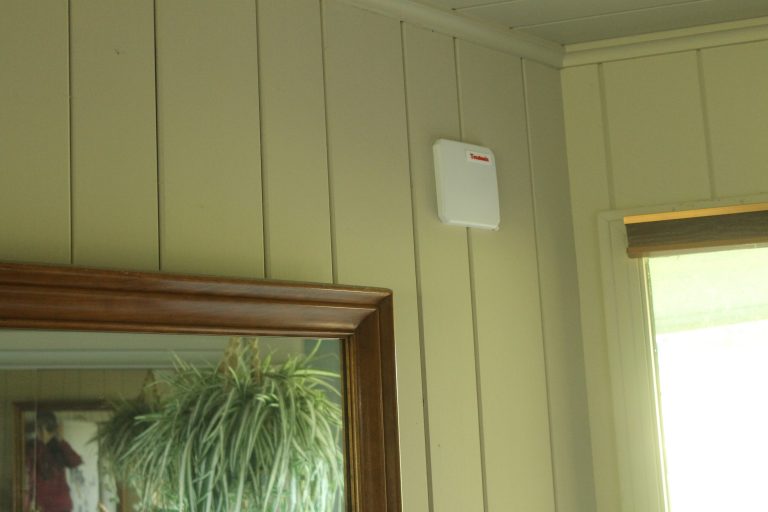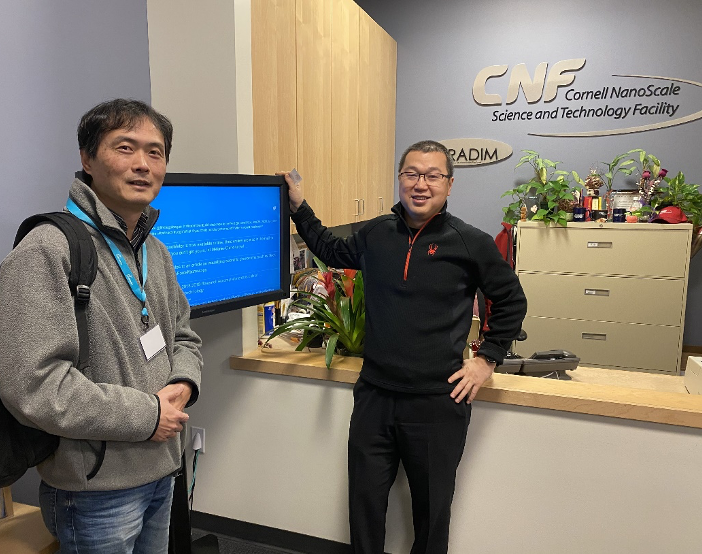Now that the Cisco Global Problem Solver Challenge 2021 winners have been officially announced, we are excited for you to learn more about each winning team and the story behind each innovation. The Cisco Global Problem Solver Challenge is an annual competition that awards cash prizes to early-stage tech entrepreneurs solving the world’s toughest problems. Now in its fifth year, the competition awarded its largest prize pool ever, $1 million USD, to 20 winning teams from around the world.

Of the 20 teams, Teratonix was honored as a third runner-up with a $25,000 USD prize. Teratonix is a U.S.-based ambient radio frequency (RF) energy harvesting company that developed a solution to generate electricity to power sensors, wearables, and implanted medical devices without the reliance on batteries. This is a significant technological breakthrough with wide-reaching benefits for the Internet of Things (IoT) industry and the environment at large.
To learn more about Teratonix’s technology and the steps it hopes to take with the recognition, I met with the co-founders Dr. Yi Luo and Dr. Johnny Huang.
What problem is your technology solution trying to solve and how does it work?
Yi: With the expanding IoT industry, it’s expected that trillions of IoT sensors will be deployed for smart buildings and cities, healthcare, and industrial IoT applications. At present, IoT sensors are largely battery-powered, and this presents significant implications: 1) battery manufacturing creates high carbon emissions, 2) single-use batteries generate large amounts of chemical waste, and 3) battery replacement is labor-intensive, costly for commercial applications, and inconvenient for consumers. Addressing the battery dependency creates benefits for the environment, as well as global IoT adoption. This was our motivation to develop a RF harvester based on patented technologies, which works like a solar panel, for ambient broadcasting RF signals that can wirelessly power battery-free IoT sensors.
Johnny: The scale of IoT applications requires a clean energy-driven, high-efficiency solution, and we have a path to achieve this through RF harvesting to power IoT sensors. When you think about the cellular towers and Wi-Fi routers around us, it’s understood they enable internet connectivity, but you may not realize all the signals, in the form of electromagnetic waves, they’re producing. These towers and routers are emitting waves of around 10 billion kWh energy annually in the United States which is about 10% of the energy generated by solar panels, and many of the wasted waves can be harvested. Energy harvesting is a relatively new concept, and we’re focusing on advancing its commercial deployment.
With the widespread deployment of 5G networks at high frequency band (above 20 – 30 GHz, i.e., at mm-Wave band), this means up to one hundred times more RF energy can be harvested or wirelessly delivered over the air. This summer, we completed our harvester chip prototype for mm-Wave, and it can be used with smart RF power sources, such as beamforming with 5G towers and Wi-Fi routers, to achieve high-efficiency, wireless power transmission.

What inspired you to develop this solution?
Yi: The inspiration was borne out of my research at Carnegie Mellon University focused on ultra-high speed semiconductor devices. With the discovery in ballistic quantum transport physics and novel nanofabrication technologies, we invented an ultra-high speed, metal-semiconductor-metal (MSM) diode, which can efficiently convert RF signals into useful DC current at ambient power levels with up to Terahertz frequency and increase the harvesting efficiency 100 times in some applications. Teratonix has secured patents for the MSM diode, which is the foundation of our RF energy harvesting technology. In addition to being inspired by this groundbreaking technology, we’re also heavily driven by the environmental good of being less battery dependent and the benefits of connecting people and things when you think about the full expansion of IoT into where you live, play, and work.
How will winning a prize in the Cisco Global Problem Solver Challenge help you advance your business?
Johnny: Our current focus is on proving the commercial viability of our RF harvesting chip. This means building, testing, and improving the design of our prototypes, and the prize money will support those efforts. We believe our technology is unique, but as a small company, we depend on the bigger players in the ecosystem to validate our vision and partner to accelerate the path to commercial deployment. Hopefully, the recognition from Cisco allows greater visibility and partnering opportunities with IoT sensor manufacturers, IoT chip-set integrators, 5G service providers, and Wi-Fi router manufacturers, as well as capital investors to take our technology to the next level. We’re also hopeful to partner with Cisco’s IoT business units and explore Cisco resources for start-ups, such as with Cisco’s LaunchPad program.

How has the global pandemic impacted your work?
Johnny: As a hardware company, we’re dependent on working in labs and with manufacturing partners. So, our chip development operations halted for almost a year and only resumed this past spring. Some of our partners in the industrial IoT were significantly impacted by the pandemic which delayed our scheduled pilots.
On the positive side, the pandemic is the accelerating development and adoption of IoT sensors, particularly in remote environmental and equipment monitoring for buildings and facilities, asset-tracking for food safety, shipping medicine, and contact tracing. As a result, interest in Teratonix’s solution is increasing.
Why did you decide to start your own social enterprise versus going to work for a company?
Johnny: Yi and I came full circle having studied together for our Ph.D. program at Columbia University and now realizing the vision to, one day, be a major IoT technology contributor. As Steve Jobs said in his Commencement speech at Stanford, “you can’t connect the dots looking forward; you can only connect them looking backward. So, you have to trust that the dots will somehow connect in your future.” I truly believe there are many dots aligning in our favor, and while this is a high-risk venture, we are on the verge of being ready for commercial deployment.

What advice do you have for other social entrepreneurs?
Johnny: Start-ups come with a high failure rate, and the rate can be even higher for those striving to make a social impact. As a social entrepreneur, you need to balance the commercial success of your venture and your social motivations. It’s wonderful to know that you’re doing something meaningful that’s bigger than yourself, but you need to be realistic about what it takes to realize a successful business. An invaluable investment, especially early on, is in a credible partner that can validate your business model, assist in assessing risks, and evaluate the feasibility of your solution. Every business is going to have its ups and downs, but there’s so much to be learned from others who have tried and traveled down the same path as you.
Yi: You may have a set course or use-case in mind for your solution or technology, but other opportunities may present themselves along the way. It’s important to be open-minded to other paths that may be different than the one you originally started, while continuing to draw motivation from the bigger potential that served as the original inspiration for your business.
Stay tuned for more articles in our blog series, featuring interviews with every Cisco Global Problem Solver Challenge 2021 winning team!


CONNECT WITH US